
 JG Faherty is a horror novelist, whose titles include The Cemetery Club. He’s been a zoo keeper, photographer, salesman, laboratory manager, medical researcher, marketing specialist, and teacher. He’s got a new novella out, He Waits.
JG Faherty is a horror novelist, whose titles include The Cemetery Club. He’s been a zoo keeper, photographer, salesman, laboratory manager, medical researcher, marketing specialist, and teacher. He’s got a new novella out, He Waits.
He met me at The Slaughterhouse, where we talked about the E Book Revolution and the evolution of horror fiction.
Do you think horror is changing?
Ah, the perennial question. The short answer is yes and no.
My take on horror is that it’s always changing, but at its heart it stays the same. Here’s what I mean: In the 70s and 80s, vampires and werewolves were all the craze. From King’s ‘Salem’s Lot and McCammon’s They Thirst to the mini-series by Tracy Briery, Scott Ciencin, Christopher Golden, and Fred Saberhagen, the undead were everywhere. Then you had some changes: Anne Rice with her gothic, romantic vampires and mummies, which eventually spawned Laurel K. Hamilton’s Anita Blake series, which in turn led to paranormal romance and erotica being so popular today. You had Skipp and Spector in the 80s and 90s with their splatterpunk horror, which mutated into the blood-and-guts serial killer horror that’s all the rage today. Readers grew tired of nasty vampires, then they grew tired of suave, sophisticated vampires, and now we’re saddled with sparkly, emo vamps. Go back 20 or 30 years, and you won’t find zombies on anyone’s shelves. But thanks to Brian Keene and some others, zombies are everywhere you turn. They’re even more popular than vampires. Hell, you can’t go on Facebook without seeing a zombie cartoon or a mention of the coming zombie apocalypse.
Movies are no different. Way back in the 50s you had all the giant bug movies and space creatures. Before that it was the traditional monsters: Frankenstein, Dracula, the Wolfman. In the 70s it was creatures in creepy houses, crazy serial killers, and comical vampires. In the 80s things shifted into space for a while, due to Alien. You had a lot of zombie movies, thanks to a revival in popularity of ‘Night of the Living Dead.’ The 90s were kind of bad for horror movies; not a lot of memorable ones. And then BAM! Torture porn movies hit like a plague. ‘Saw,’ ‘Hostel,’ etc., etc.
So yes, horror constantly changes on the surface. But underneath, in its dark heart of hearts, it remains the same. It has one purpose, and that is to scare and entertain us. Horror, through the subconscious and conscious minds of writers and artists, senses what the general population is looking for. Not scared by vampires anymore? Okay, we’ll give you zombies. Oh, zombies are turning farcical? We’ll give you a reject from the Insane Clown Posse who likes to make people cut their own feet off. What’s that? You have a hankering for werewolves? We got those! How about a remake of the Wolfman? Or a remake of The Howling? Or a new twist on Little Red Riding Hood?
Horror is, and always has been, all about stirring up our fears so that we can let them out, like a boiler letting off some steam so the pressure doesn’t build up too much. We like to get scared, especially when we know that an hour or two later we’ll be laughing about jumping in our seat. Horror reminds us that our problems aren’t so bad. Sure, money’s tight and your oldest kid just came home with purple hair and nose ring. But that’s sure better than seeing the neighbor turn into giant wolf, or getting kidnapped at the mall by a psycho who wants to sew your butt to someone else’s mouth. And that’s why horror will never change. Good or bad, literary or cheesy, gory or suspenseful, horror is, in the end, a part of the human condition, and just like all good literature or art, it works best when tapping into our own emotions.
Tell us about Cemetery Club.
 Cemetery Club is the story of 4 childhood friends who are forced to reunite when the deadly evil they released 20 years ago – and thought they’d put an end to – returns with a vengeance.
Cemetery Club is the story of 4 childhood friends who are forced to reunite when the deadly evil they released 20 years ago – and thought they’d put an end to – returns with a vengeance.
When I started writing the book, I was working with the idea of evil being something that grows beneath the town of Rocky Point, because of the terrible things that have occurred there over the centuries. Despicable murders, experimentation on unwilling patients in a mental hospital, secret burials. The idea came to me because of my own ‘urban exploring’ in a local abandoned asylum, one that was established more than 70 years ago to provide a haven to the feeble and physically incapacitated but which, thanks to underfunding and overcrowding, became one of those terrible state-run places where doctors experimented on the patients – vaccines, lobotomies, shock therapy – and eventually Geraldo Rivera did an expose on the deplorable conditions. That was in the 1970s; by 1999 all the buildings were empty, but in typical government fashion nothing was removed. Patient files, business check books, dental records, fixtures, furniture – all of it left behind. The place quickly got a reputation for being haunted. My friends and I have been in almost all the buildings over the years, and visited the graveyard of forgotten patients on several occasions (a field of numbered crosses with no names, marking the sites where patients without families were buried, often after being used as experimental subjects).
However, in the course of writing the book, I realized that my initial ‘monsters,’ the Shades, were only half the story. The book had also morphed into a zombie novel, with Shades taking over bodies and turning them into a hive-mind of flesh-eating creatures. This created a great opportunity for me to torture my heroes. They had two enemies to fight, and each had to be dispatched in a different way. Of course, on top of that you have the non-supernatural obstacles: stubborn town officials, nasty ex-husbands, and the troubled pasts of the four main characters, who end up finding out more about themselves, and the town, than they bargained for.
At its heart, Cemetery Club is a novel of good vs. evil, people overcoming their pasts, and a dark history that too many old asylums share in the real world.
Who are your literary influences?
I have a lot of them. As a young boy, the first fiction books I can remember reading were The Hardy Boys. But from there I moved quickly into sci-fi and horror – Something Wicked This Way Comes stands out as something that really blew my mind when I was probably 10 or so. My reading back then was probably more diverse than it is now. I read the classics – Poe, Shelley, Stoker, HG Wells, etc. – and I also read the ‘modern’ writers of the time. Heinlein, Piers Anthony, Alan Dean Foster, Roger Zelazny. Then I started moving more into horror. My first Stephen King book was ‘Salem’s Lot (somehow I’d missed Carrie). I couldn’t get enough of him, or Peter Straub, or Dean Koontz, or Robert McCammon. Then the great horror revolution of the 80s occurred and I was reading 3 paperbacks a week.
So, who would I say directly influenced me as a writer? King – his ‘every man’ style of writing made me want to write. Bradbury – because his ideas were so cool. Heinlein – because he could be funny and serious all in 1 book (The Door Into Summer is a perfect example). Charles Grant, who showed me that you didn’t need gore to scare people. And I have to say that F. Paul Wilson, David Morrell, and Thomas Monteleone were also big influences, although later in my life, because they are the ones who actually showed me how to write.
Do you think evil is human or supernatural?
Do I think evil is human or supernatural? That’s a good question. I guess I would have to believe that it’s supernatural. Because while evil is definitely something that humans are well-practiced at – and seem to have inherent in themselves, to varying degrees – evil also exists beyond the human condition.
Chimpanzees have been known to wage war on other tribes just to get food or mates.
Even in humans, there is a difference between conscious evil – the guy who kills you while stealing your wallet, the dentist who fondles his patients while they’re asleep – and inherent evil. We’ve all seen it or heard about it. The young child who enjoys torturing the household pets or his little brother before he’s even old enough to talk. The politician who wages genocide and feels no remorse about it.
I guess what it comes down to is if you believe in Good, you have to believe in Evil. If we are truly made in God’s image, then it means the good and bad in each of us is just an extension of a larger good and bad that is part of the universe. That would go a long way to explaining why some reports of aliens are benevolent and some are downright nasty!
What do you make of the E Book revolution?
I am of two opinions when it comes to the ebook revolution.
On the one hand, I love it. I own a kindle, and I love being able to download a book at less than traditional cost, which allows me to explore new writers cheaply. And all the classics are free. Plus, it means I don’t have to take 4-5 books with me on vacation; I just pack up the kindle. As a writer, it’s also great. Ebooks have gotten a whole new generation of readers interested in genre fiction. Today’s readers don’t want to lug around paperbacks or hardcovers. They want electronic books they can share between their different reading devices – computer, phone, pad, reader. That, in turn, translates to more sales for writers.
On the other hand, there is a lot I don’t like. First off, you lose the joy of holding a real book in your hands, of having the books displayed in your bookcase. Someday soon a library will just be an online repository where you borrow an electronic file. No more dusty shelves, echoing rooms, and mysterious atmospheres. Books will become anachronisms, like in the Star Trek movie where Kirk still wants to read a real book. Second, writers are getting ripped off. Publishing companies want to pay the same old royalties and advances, despite the much lower cost of producing an ebook. And third, the relative simplicity of creating an ebook means that the internet is now flooded with people hawking their self-published ‘books,’ and the generally poor level of writing among these so-called authors is creating a backlash where readers think anyone who isn’t famous is probably a self-published hack.
What we need is a way for small and medium-press writers to distinguish themselves from the fly-by-night self-published crowd. Just like in a book store where you have the big sellers and then the racks of paperback hopefuls, we need a way to show people that small press ebooks really are edited and proofed and written by professional writers.
How do you think horror is different from terror?
At its most simplistic, terror is what you feel, and horror is what causes the terror. I know people say you can be ‘horrified,’ that you feel real ‘horror’ at something, but to be horror is something that generates fear or terror or even loathing.
Bodies strewn about on a battlefield is a horror.
A monster with three heads is a horror.
Getting brutally raped is a horror.
Now, the dictionary defines horror both ways:
1. An intense feeling of fear, shock or disgust.
2. A thing causing such a feeling.
So my personal definition is a bit different than the real one. But to me, it’s like saying pain causes pain. If horror means terror, how can terror cause terror? It’s another example of language not being exact – or perhaps being too exact!
We say the horror of it all, and we mean how awful something is. How terrible.
And when we’re frightened, we say we’re terrified – we don’t say we’re horrified. That’s more an expression of shock than fear. So I would amend the dictionary definition of horror to say it is an intense feeling of shock or disgust, or the thing causing such a feeling, or causing a feeling of terror.
But it is not a feeling of terror.
Now let the etymologists come at me!
Do you think extreme criminality is a theme a horror writer can acceptably tackle if he is exploring the psychopathology that motivates humans to commit atrocious acts?
Of course. Thriller writers do it. Mystery writers do it. Non-fiction writers do it. Why should horror writers be different? Extreme acts of human brutality have always been fodder for fiction – psychopathic murderers, cannibals, war atrocities, rape, torture. It’s all been done over and over. And it’s been done for decades. Do you think the creators of ‘Saw’ invented torture porn?
Exploring the dark depths of man’s nasty side is part and parcel of horror.
What are you working on now?
What am I working on now? I’ve got a couple of novels that I’m fooling around with, one that I’m 12K words into, and another that I’m outlining. I’m also brainstorming ideas for a sequel to Carnival of Fear but I haven’t gotten any momentum up for that project yet. I write whatever strikes me each day, so I’ve always got 2-4 things going at the same time.
Why do you think monsters appeal to people?
For a couple of reasons. They are the opposite of us (or so we’d like to think). They are grotesque, scary, without morals; they are different and yet it’s okay to hate them for being different, unlike the way we feel about people who are different. You aren’t supposed to dislike people for the color of their skin, or their deformities, or the way they dress, or how they talk, or what god they worship. But let’s face it: we all have prejudices, whether you’re a member of the Aryan Brotherhood or just a person who thinks people who dress all in black and listen to The Cure all day are ‘not right.’ We can hate the monsters and it’s just dandy because they represent all that’s wrong in the world, they represent the chaos that would occur if people other than us weren’t in control. And we feel extra good because we say it’s ‘mankind’ against the monsters, not whites or blacks or Jews or Christians or southerners or northerners. We feel good about ourselves when the monster is dispatched, because it’s a bad monster!
The second reason is monsters are scary, and anything scary gives us a release from the real horrors of our world – the bills, the wars, the death. We forget the bad in our own lives because for a few hours we are transported to a place where things are so much worse.
Finally, I think we love monsters simply because they’re so damn cool. They bring us back to our childhood, when we simultaneously feared and worshipped the monsters. What kid didn’t love Frankenstein or Dracula or the Wolfman? We played with models, watched them in movies and cartoons, read books, and snuck comics under the covers. Just to see monsters.
So, I guess in reality I think there are three reasons. So sue me!
Tell us something your readers don’t know about you.
Many years ago I was working as a photographer. I ran a one-hour film place and portrait studio. During that time, I got a lot of side jobs from people, everything from shooting weddings to architectural photos. A couple of times, I was asked by local police departments to take pictures of accident scenes when their regular photographer wasn’t available. Usually it was just a smashed guard rail or two cars all bashed up. But on one occasion it was a person who’d been hit by a train. The body was gone, but the bloodstains were still there on the tracks and on the front of the train. In the process of shooting the area, I found an eyeball on the tracks. I think to this day I still have that picture somewhere in my files. I’m hoping that I’ll be able to work that scene into a book or story.
Thank you Greg for an insightful interview.

 Links:
Links:
Author website
Facebook
Twitter
He Waits can be found at Amazon US and UK.
Cemetery Club at Amazon US and UK.
The Cold Spot at Amazon US.

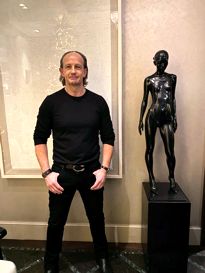
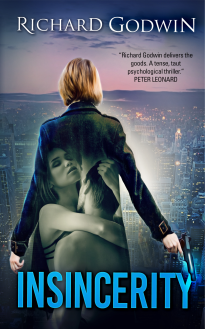
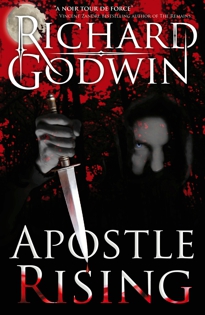
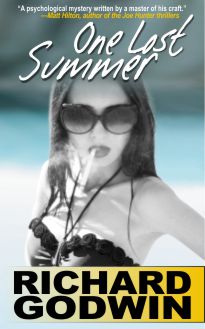
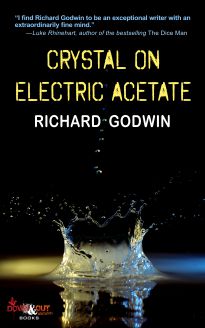
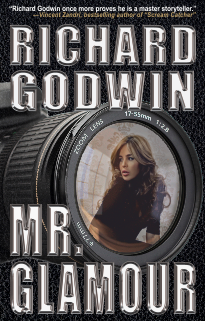
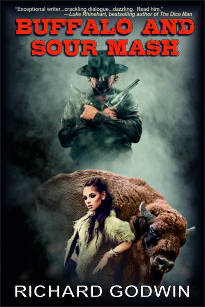
3 Responses to Chin Wag At The Slaughterhouse: Interview With JG Faherty